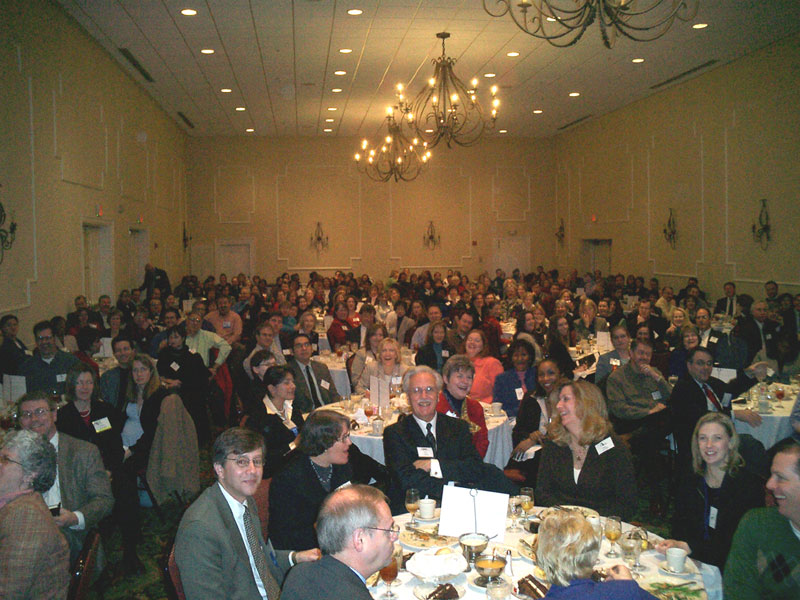Category Archives: Media & Entertainment
RadioGPT
I first read about –and started plays with– this technology in February of 2023. I wondered at the time how long it would be before radio station owners took notice. No time at all, it seams.
Futuri Launches RadioGPT, The World’s First AI-Driven Localized Radio Content
Cleveland, Ohio, February 23, 2023 — Futuri is revolutionizing the audio industry with the launch of RadioGPT™ — the world’s first AI-driven localized radio content solution. RadioGPT™ combines the power of GPT-3 technology with Futuri’s AI-driven targeted story discovery and social content system, TopicPulse, as well as AI voice tech to provide an unmatched localized radio experience for any market, any format.
RadioGPT™ uses TopicPulse technology, which scans Facebook, Twitter, Instagram, and 250k+ other sources of news and information, to identify which topics are trending in a local market. Then, using GPT-3 technology, RadioGPT™ creates a script for on-air use, and AI voices turn that script into compelling audio.
Stations can select from a variety of AI voices for single-, duo-, or trio-hosted shows, or train the AI with their existing personalities’ voices. Programming is available for individual dayparts, or Futuri’s RadioGPT™ can power the entire station. RadioGPT™ is available for all formats in a white-labeled fashion.
RadioGPT™ also generates social posts, blogs, and other content for digital platforms related to the content on the air in real-time. A TopicPulse Instant Video add-on creates AI-driven short videos on hot topics for social use. By adding on Futuri’s POST AI-enabled podcasting system, stations can take broadcast audio and immediately publish it on-demand with POST’s auto-publishing feature.
Two kinds of radio station
Last week the owner of Moberly, Missouri radio stations KWIX and KRES —Alpha Media— laid off all of their on-air staff. (Bob Priddy mourns)
The following is from a post and interview I did in 2007 with Dave Shepherd, the son of the man who put KWIX/KRES on the air.
Fifty years ago, Jerrell Shepherd mastered a form of broadcasting alchemy that turned small town radio lead into gold. It wasn’t much of a secret, however, since he readily shared it with countless radio station owners and managers who made the pilgrimage to Moberly, Missouri, in hopes of bringing some of Shepherd’s sales and programming magic back to their stations.
While most small market broadcasters were content to get “their fair share” of local advertising budgets (the bulk went to the local newspaper), Shepherd’s sales reps were trained to ask for it all and believed in their hearts they deserved it.
Mr. Shepherd’s approach to programming his stations was deceptively simple: report anything and everything that happened in each of the communities covered by his stations’ signals. The KWIX and KRES “Red Rovers” showed up just about every high school football game, junior high choral concert and chamber of commerce ribbon-cutting. And the Shepherd stations put it all on the air. Always with local sponsors. Lots of local sponsors.
The new owner, Alpha Media, owns a lot of radio stations including KBFF Live 95.5 FM in Portland, OR. Last June the station introduced the first AI-powered DJ, “AI Ashley.”
“Alpha Media’s EVP of content Phil Becker assured listeners that Elzinga’s job is safe and she’ll be receiving the same pay, telling TechCrunch that AI Ashley is a tool that will allow DJs to multitask like never before.”
I’d love to know what sort of prompt could result in an AI making a call and interacting with a listener as we heard in the clip above. As the program director of a small town radio station back in the 1970’s I was responsible for hiring and training weekend talent. I might have jumped at the chance to put an AI voice on the air.
Will the KWIX/KRES on-air staff be replaced with AI voices? If so, how will the station’s listeners and advertisers respond?
If AI does nothing else for us…

What are you gonna do?
Trump Stand-up
The genius behind these is someone named Jabari Jones (YouTube). There’s an actor by that name but cannot confirm this is his YT channel. What can I tell you, I’m a sucker for crude humor.
“A yammy full of Georgia joy juice”
The Shield premiered in 2002 and got glowing reviews but I never got around to watching it. Until now. It holds up well after 20+ years. The show was created and written by Shawn Ryan and while I can’t say for sure he penned this bit of dialog, somebody deserves an award for coming up with the line, “I’ve got a yammy full of Georgia joy juice.” And I thought I had every slang term for female genitalia.
Fallout
“The end of the world is not what it used to be”
Is that a great tagline, or what? I’m about four episodes in. Making the end of the world funny is a tall order but the series manages to do so. Walton Goggins (Boyd Crowder!) is the perfect bad guy; Mykelti Williamson (Ellstin Limehouse, also from Justified) makes a early/brief appearance; Dale Dickey, another Justified alum (who was wonderful in Winter’s Bone) does her redneck thing, and I’m sure I’ll be seeing other familiar faces. Oh, and the soundtrack. Absolutely brilliant.
Public relations technology in 2006
In 2006 I was asked to be on a panel discussing new technology tools for public relations professionals in the greater St. Louis area. Blogging was still relatively new at the time and I’d been at it for five or six years, consulting for advertisers on our various radio networks. It was a packed house.

2006 was a busy year for technology (social media?). Twitter officially launched in July; Facebook opened up to everyone over 13 years old, leading to explosive growth from 12 million users at the end of 2006 to 50 million by October 2007; YouTube was acquired by Google for $1.65 billion in October, cementing its position as the leading online video platform.
I spent most of my working years on the media side of things rather than the PR side, but one (of many, no doubt) go-to tool was the written press release. These went out (fax, USPS, email) to any media outlet that might do a story (Newspapers, magazines, radio, TV) followed up by a phone call “pitching” the story. I don’t recall there being any way to get a release into the hands of the public. The internet –and, later, social media– changed all that. We started seeing and hearing the word “disintermediation.” Communicating directly to a target audience, bypassing traditional media.
By this time many (most?) businesses, organizations and institutions had websites but it took some technical skill to update these, a task made easier by the advent of blogs. And a well-written, frequently updated blog could be followed thanks to a bit of tech called RSS.
As I prepared to write this post I tried to recall what the field of public relations was like in 2006 (18 years ago!). Instead of googling I used a new (for me) tool called Perplexity that describes itself as an “answer engine” rather than a search engine. If you discount the personal touch, the result was much better than what you just read. I’m too new to this tool/tech to write intelligently about it does feel like a very big deal. I’m already starting to go to Perplexity for answers I once searched for on Google. And all we really wanted was the answer, right? Here’s a short (6 min) video overview of Perplexity and I’ll be sharing my experiences here.
Draining the Swamp
The floodway ditches. That’s what we called the series of small drainage ditches just outside of Kennett, Missouri. I think there were four or five of them. They have a rich history.
Bleak, Crime Infested Towns In the (Missouri) Bootheel
There is a seemingly endless variety of genres on YouTube, and one that has been showing up in my feed more frequently of late is what I call the “driving tour of small town America” videos. During my many years, on the road in the Midwest, I had occasion to drive through lots and lots of small rural towns, so I’ve found this series interesting.
The video above offers a rather depressing look at four towns in southeast Missouri: Caruthersville, Hayti, Kennett, and Cardwell. Some of the demographic statistics were almost as bleak and shocking as the images.
Saturday Night at the Movies
While endlessly scrolling through the hundreds (thousands?) of movie titles in Amazon Prime Video, Netflix, HBO Max, and all the other streaming services, I flashed back to my youth (‘50s and ‘60s) when watching a movie on TV was a rare treat. Following from Wikipedia:
NBC Saturday Night at the Movies was the first TV show to broadcast relatively recent feature films from major studios. The series premiered on September 23, 1961, and ran until October 1978, spawning many imitators. Previously, television stations had been only been able to show older, low-budget, black-and-white films that wouldn’t be shown at movie theaters. In the late 1970s, competition from cable television and home video led to a decline in viewership.
It’s difficult to convey what a treat it was to watch a feature-length movie on network TV. The “late show” usually came on right after the ten o’clock news and ran into the wee hours with lots of commercials. We could never have imagined watching almost any film ever produced. Never mind on-demand streaming to a hand-held device.
